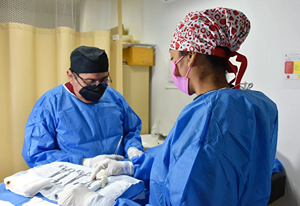Introduction
Medical malpractice is a term that often sends shivers down the spine of patients seeking care. For many, it represents a betrayal of trust from medical professionals who are supposed to prioritize their health and well-being. But what exactly constitutes medical malpractice? https://jsbin.com/bicorekeca Why do so many claims arise in this complex field? In this extensive article, we’ll explore the Common Types of Medical Malpractice Claims Explained. We'll dive deep into various aspects, including the causes, implications, and preventive measures that can be taken to avoid such situations.
This topic is not just about legal jargon; it’s about real people—patients and families—who have been affected by negligence in healthcare settings. Whether you’re a healthcare professional or someone navigating the medical system, understanding these claims can empower you and ensure you know your rights.
Understanding Medical Malpractice
What is Medical Malpractice?
Simply put, medical malpractice occurs when a healthcare provider fails to deliver competent care, resulting in harm to the patient. This failure can take many forms, from misdiagnosis to surgical errors. According to various studies, thousands of patients are harmed each year due to negligent behavior by healthcare professionals.
Key Elements of Medical Malpractice
For a claim to be classified as medical malpractice, four essential elements must typically be established:
Duty: The healthcare provider had a duty to care for the patient. Breach: The provider breached that duty through negligent actions or omissions. Causation: The breach directly caused harm or injury. Damages: The patient suffered damages as a result of the breach.Understanding these elements is crucial for anyone considering pursuing a claim.
Common Types of Medical Malpractice Claims Explained
1. Misdiagnosis or Delayed Diagnosis
One of the most common types of medical malpractice claims involves misdiagnosis or delayed diagnosis. Imagine going to your doctor with concerning symptoms only to be told it’s nothing serious, but later discovering it was cancer all along. This scenario isn’t just tragic; it’s also legally significant.
Why Do Misdiagnoses Happen?
Misdiagnoses can stem from various factors:
- Inadequate patient history Failure to order appropriate tests Ignoring standard medical practices
When these failures occur, they can lead to severe consequences for patients who might require immediate treatment.
2. Surgical Errors
Surgical errors come in different forms:
- Performing surgery on the wrong site Leaving instruments inside the body Administering anesthesia incorrectly
These mistakes not only jeopardize health but may also lead to long-term complications or even death.

What Causes Surgical Errors?
Factors contributing to surgical errors include:
- Poor communication among surgical teams Inadequate pre-operative planning Fatigue among staff members
3. Medication Errors
Medication errors are another prevalent category within medical malpractice claims. These occur when patients receive the wrong medication or incorrect dosages.

Types of Medication Errors
Medication errors can happen in several ways:
Prescribing medications without considering interactions. Failing to confirm allergies. Incorrect dispensing by pharmacists.The impact can be devastating and may result in prolonged hospital stays or additional health issues.
4. Childbirth Injuries
Childbirth is one of life’s most joyous occasions but can easily turn into tragedy due to negligence during labor and delivery.
Common Birth Injuries Include:
- Cerebral palsy Erb's palsy Fractures
Injuries like these could arise from improper monitoring during labor or failing to perform necessary interventions in emergencies.
Exploring Other Common Claims
5. Anesthesia Errors
Anesthesia plays a vital role during surgeries; however, mistakes made here could lead to severe complications like brain damage or even death.
Causes of Anesthesia Errors:
- Incorrect dosage calculation. Failing to monitor vital signs properly.
6. Failure to Treat
When doctors fail to provide necessary treatments based on established standards of care, they may be liable for medical malpractice.
Consequences Can Include:
Patients suffering worsening conditions due to lack of intervention or improper follow-up care.
The Legal Process for Medical Malpractice Claims
How Do I Know If I Have a Case?
Determining if you have a case involves asking key questions:
Did your healthcare provider act negligently? Did their negligence cause you harm?If both answers are yes, you might have grounds for a claim!
Steps in Filing a Claim
Consult with an experienced attorney familiar with medical malpractice cases. Gather all relevant medical records and documentation. File your complaint with the proper jurisdiction within allowed time limits (statute of limitations).Preventive Measures Against Medical Malpractice Claims
Educating Patients About Their Rights
Awareness is crucial! Patients should know they have rights regarding their treatment options and care standards expected from providers.
Encouraging Open Communication Between Patients and Providers
Open dialogue helps reduce misunderstandings that could lead to negligent behavior down the line!
FAQs About Common Types Of Medical Malpractice Claims
1. What qualifies as medical malpractice?
Medical malpractice occurs when a healthcare professional fails in their duties leading directly to patient harm.
2. How long do I have to file a medical malpractice claim?
The statute of limitations varies by state but generally ranges from one year up until three years after discovering harm caused by negligence.
3. Can I sue my doctor for bad outcomes?
Not necessarily! A bad outcome doesn’t automatically constitute malpractice unless negligence is proven as well.
4. What damages can I recover in a malpractice suit?
Damages may include medical expenses incurred due injuries sustained; lost wages; pain and suffering; emotional distress; etc., depending on individual circumstances!
5.I’ve already settled with my doctor’s insurance company—can I still pursue further action?
Once settled under certain agreements (releases), pursuing additional actions becomes unlikely unless new evidence emerges warranting it!
6.Should I talk publicly about my case while it's ongoing?
It’s best practice not too! Public comments could jeopardize your claim's integrity if others get involved before resolution occurs!
Conclusion
Navigating through the intricacies surrounding common types of medical malpractice claims requires awareness, education, and sometimes legal expertise! Understanding these different categories enables both patients and providers alike—to foster better communication while adhering closely established protocols designed protect everyone involved within this delicate relationship—improving overall healthcare quality over time!
So next time you step into that doctor's office or emergency room—remember: Knowledge truly is power! And don’t hesitate—you deserve competent care every single day!
By arming yourself with information outlined above regarding common types of medical malpractice claims explained—you're taking proactive steps toward safeguarding not only your health—but potentially paving brighter futures ahead—for countless others too!